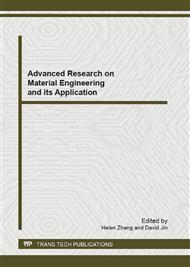p.558
p.562
p.566
p.570
p.574
p.578
p.584
p.588
p.592
Material Balance Calculation of Chromium Ore Smelting Reduction and Direct Alloying Process in a Converter
Abstract:
The production process of stainless steel by chromium ore smelting reduction and direct alloying is an important and advanced way to raise the productivity of stainless steel, decrease the production cost, save electric energy and improve the economic profit. The material balance calculation of producing stainless steel crude melts by chromium ore smelting reduction in a 150 t converter is carried out by use of the empirical data and the calculation method of refining plain carbon steel in a converter, according to the blowing conditions of 185 t smelting reduction converter of No.4 steelmaking shop in Chiba Works of JFE Steel. It includes the actual oxygen consumption, furnace gas composition and occurrence amount, mass calculation of stainless steel crude melts and preparation of total material balance table. The absolute error of material balance is -2.859 kg and the relative error is -0.169%. The error is very small, so the material balance calculation can provide certain quantitative basis for determining reasonable design parameters and increasing smelting technology economic indicators.
Info:
Periodical:
Pages:
574-577
Citation:
Online since:
February 2012
Authors:
Price:
Сopyright:
© 2012 Trans Tech Publications Ltd. All Rights Reserved
Share:
Citation:


